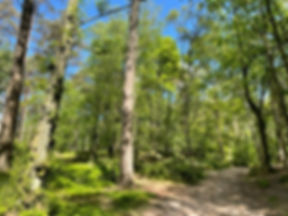There were few signs of spring, beyond a couple of bright yellow clumps of narcissus, when I set out to walk from the Adur Estuary to Truleigh Hill last week, but that didn’t mean there weren’t any signs of life. Though the mouth of the estuary feels pretty urban, with new residential developments springing up constantly, and a good deal of foot-traffic, none of the hustle and bustle of modern life deters the shorebirds who have made the place home from putting on a good show.
I’d barely been walking for five minutes, when we were treated to the spectacle of a Little Egret ruffling its feathers and shaking its large feet in the shallows. These small, elegant members of the heron family were once considered a rarity on our shores, but hundreds of years ago, when much of the southern part of the country was covered by wetlands (and before the demand for their plumes drove the British population to extinction) they were quite common.

With long, spindly legs and spiky yellow feet that look as though they’ve been dipped in paint, Little Egrets are perfectly adapted to fishing in shallow waters, and the strange dance I witnessed is an effective technique for disturbing small fish that are buried in the mud. A pair of Oystercatchers looked on enviously, though beautifully patterned, their shorter, stockier legs would have made the egret’s masterful fishing near impossible.
As we ventured further and further outside of the Shoreham area, it wasn’t only the flat fields and hedgerows, but the wildlife which began to feel more rural. There were great views of a Kestrel which repeatedly landed in the grass (though didn’t seem to be catching much) and all the tell-tale signs Roe Deer had been grazing nearby.
We made our way on past flocks of Black-headed Gulls in winter plumage and the occasional Redshank, and just when I was beginning to think my dog Bentham was the perfect companion for such a trip, she abandoned the calm demeanor and remarkable restraint she’d shown around the birds and bounded onto the bank, running happy figures of eight in the thick, dark mud. She wasn’t much of a swimmer, which was a relief, because at that moment something of a local celebrity (among birders that is) swam past.

This solitary drake Goosander didn’t initially seem out of place (though having seem a flock of twenty or so up the Water of Leith in Edinburgh the week before, I wondered how it was that he’d ended up all alone). But then I remembered that these large, sleek, green-and monochrome ducks are a somewhat localised down here, with Sussex birders usually having to make a trip to somewhere like Petworth Park to see them. Visually, Goosanders have more in common with diving waterbirds like the Great Crested Grebe than most of our British ducks. Their slender red ‘sawbill’ has a menacing hook at the tip, and females have an elaborate chestnut head. The female Goosander also carries her chicks around on her back in a distinctly grebe-like fashion. But with most pair bonds made over the winter months or during spring migration, I couldn’t help feeling sorry for this lonely male, and hoped that, with the regular breeding season just around the corner, it wasn’t too late for him to pair up.
The weather turned spectacularly as we left the river behind, passed the old cement works and began the steep climb into the Downs themselves. But although both Bentham and I were drenched, I was cheered by the sight of one of the South Downs most eye-catching passerines, a tiny Stonechat singing away from his precarious perch on a barbed-wire fence. Against a backdrop of grey skies and unploughed fields, his chest – a deep terracotta red, beneath a dark face and white collar – was the only real source of colour and watching him defy the February gloom felt like my very own Thomas Hardy moment.

Enough of the clouds had cleared for us to be treated to a decent view from the top of Beeding Hill, the wind was still fairly strong, but it seemed pretty peaceful after the battering this area must have taken from Storm Eunice. It’s a striking spot, with a mighty ravine to rival that of Devil’s Dyke four miles away and exposed chunks of the chalk cliffs around the old quarry. Another Stonechat, this time accompanied by a female, was flitting about as we followed the road towards Truleigh Hill and I caught sight of a distant raptor, possibly a Red Kite, but too far in the distance to make more than an educated guess.
The YHA café was all closed up for the season when Bentham and I finally made it to our pick-up point, but for the first time in hours we were sheltered from the wind. All things considered, it was a great day out, and given that I’d done the whole thing with a neck-injury I’d highly recommend it as a not-too-demanding trek even for novice hill-walkers.

